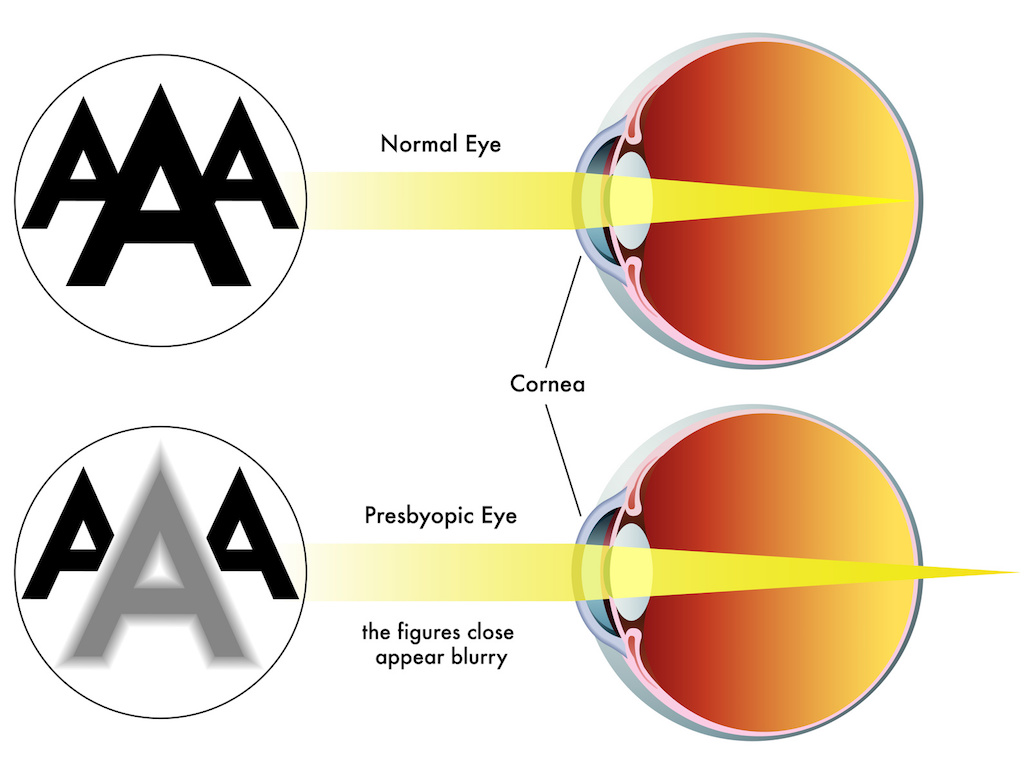What is Presbyopia?
Are you always searching for your reading glasses? Have you ever wished that there was a solution to this problem? When you are in front of the television your glasses are either in the bedroom, kitchen, car or even at the office. With the development of technology there is an operation available which could eliminate this problem and make the “old” eye as good as new.
Reading problems will start to occur at the age of about 40 years and affects just about everybody after 45. When the eyes are focusing close up, the lens changes its shape. The diameter increases and light rays are focused on the retina. As we get older the lens grows and when the space is too limited to adjust its shape, reading problems start to occur.
Modern technology has proved that by increasing the diameter of the eye it is possible to eliminate problems with reading. This enables the lens to change shape and focus again close up for reading.
Increasing the diameter is achieved by inserting four plastic arches into the white of the eye(sclera). These arches have a very specific design and are being produced, under license, in America.
The recovery process depends on the age of the patient. People under the age of 50 will recover quicker than those over 50. Recovery can take up to six months and requires a lot of exercise. This can be compared to a broken arm or leg: When the plaster of paris is removed the bone is thin and the muscles are weak. The muscles need to regain their strength as soon as there is sufficient space available for the lens to change its shape while reading.
Who qualifies for this operation?
Patients over the age of 40.
No underlying refraction errors. Other refractive procedures need to be treated (e.g. LASIK operation) before the reading problems can be addressed. Patients with no underlying eye diseases. Some systematic illnesses may be a relative contra-indication (e.g. Diabetes)
How is the operation performed?
The implants are done under general anaesthetic and the patient goes home that same day. The patient will have to come for a one-day, one week, one month and a three-month follow-up after the operation. Only one eye is done at a time. In some cases it will only be necessary to do one eye. Some patients will be able to function effectively if the dominant eye is done first.
What are the dangers involved?
As with any other operation there is always the risk of infection. To prevent this the operation is performed under sterile conditions in theatre. It is possible that the arches may move which will reduce the effectiveness of the procedure. This can be corrected by repositioning the arches under anaesthetic. In a small percentage of cases the eye has reject the arches. This is rare but is possible.
What can I expect immediately after the operation?
- For the first week the eye will be red and scratchy.
- Vision may fluctuate, especially for reading.
- Headaches may follow due to the eyedrops prescribed.
- Nausea due to the stretching of the eye. The body must adapt to the new shape.
Contact your local ophthalmologist for more information.

